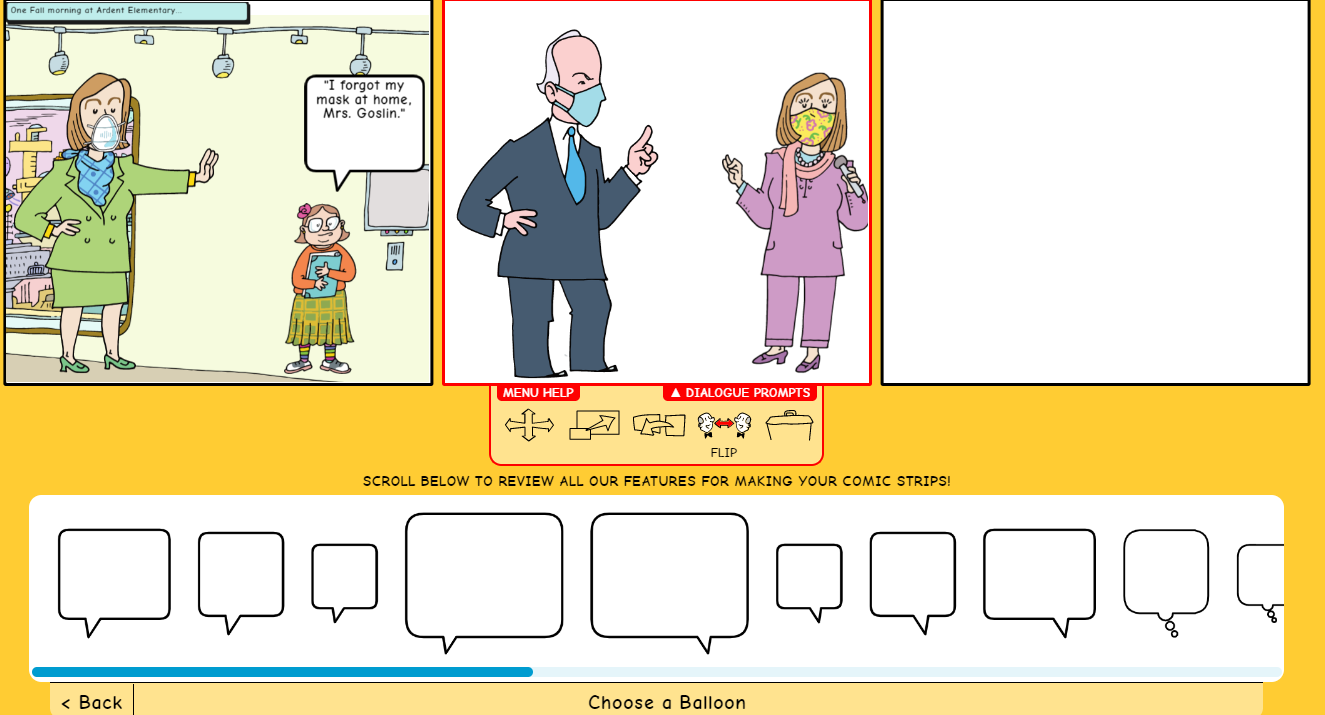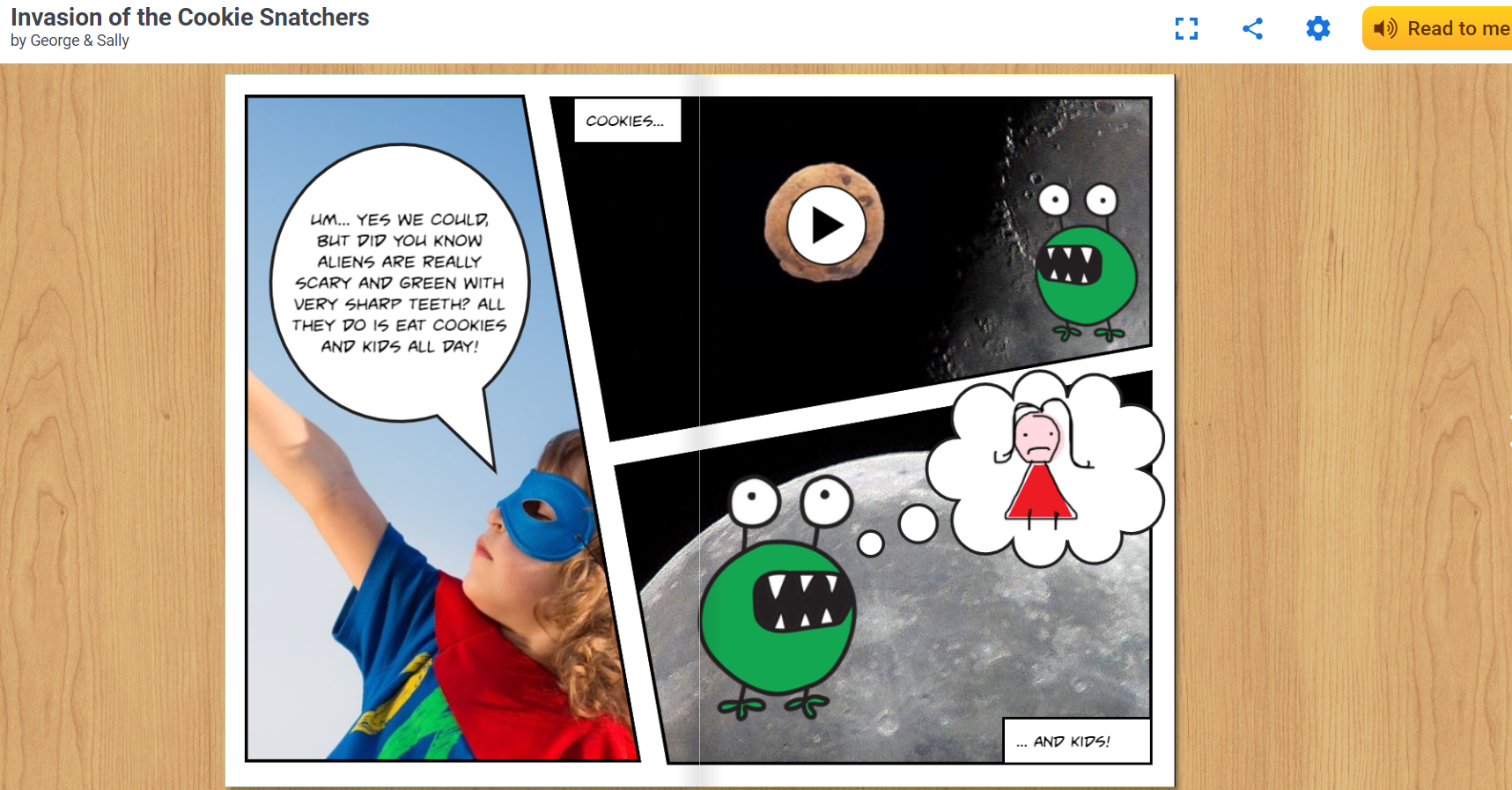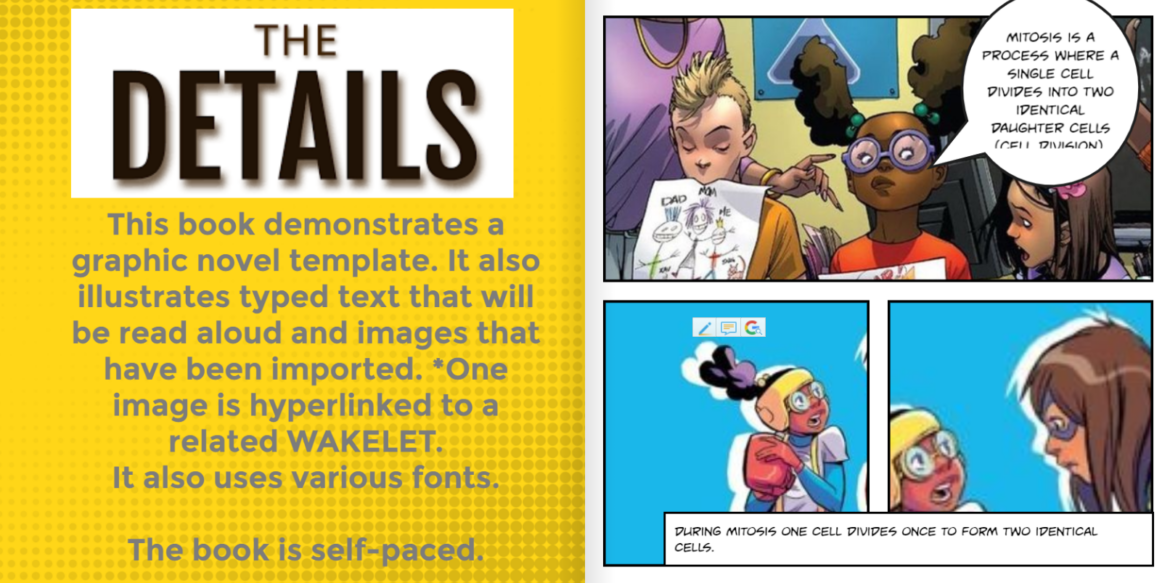Walk through a paper bookstore and you’ll find a huge section dedicated to graphic novels. Like many children of yesteryear, I grew up reading comic books. Everything from Avengers to Superman and Batman came alive as I sat on the floor of the Army Post Exchange (PX).
Today, that experience is less common. Comic books, as well as graphic novels, remain of interest to all. Whether at home or in the classroom, students themselves can create content-specific graphic novels. In this blog entry, we’ll explore a bit about the background and research, as well as how to make them.

View the images above, created by Jessica Abel. Her work is licensed under a Creative Commons Attribution-NonCommercial-ShareAlike 3.0 Unported License.
Is There a Research Connection?
John Hattie points out that imagery is a part of surface learning. Surface learning “includes subject matter vocabulary, the content of the lesson” (source). Imagery (d=0.51), as a surface learning strategy, involves the presence of visual content. That’s important due to the Modality Effect:
The modality effect refers to how learner performance depends on the presentation mode. Improve learning when you present textual information in enhanced mode. That is, when text includes auditory format, and/or visual materials. Visual materials could include a graph, diagram, or animation. Source: Visible Learning Meta X database
Comics and graphic novels take advantage of the dual processing of information. Both the text and visual imagery combine to speed processing of information. Also, consider how you can use comics and graphic novels for second language instruction; here are a few:
- Teaching vocabulary development
- Familiarization with idioms
- Introducing culturally-relevant material (source)
Learning opportunities abound with graphic novels, so why not give them a shot?
Why Graphic Novels?
Graphic novels, like comics, combine imagery with text. Some refer to graphic novels and comics as “visual narratives.” Reading and analyzing graphic novels adds depth and complexity.
With graphic novels, students use text and images to make inferences. They also synthesize information. In this form of literature, the images and the text are of equal importance. The text would not make sense without the images, and the reverse is true as well. (Source: Leslie Morrison, Adapted from The Research Behind Graphic Novels and Young Learners)
As Leslie points out, there is inferencing and synthesizing going on. Tracy Edmunds says:
Graphic texts are complex, effective teaching tools. Readers must receive information. They also must interact with both text and images to construct meaning.
Josh Elder captures this perspective in The Case for Comics in the Classroom. Engagement occurs in comics since comics show only the essential actions. Readers have to “read between the lines of each panel of even the simplest comic.” If not, the comic does not reveal its story well.
Creating Comics and Graphic Novels
There are definitely benefits to analyzing and reading comics and graphic novels. But what about making them?
Creating graphic novels and comics can be tough work. You can see how one comic gets created. Let’s explore some quick, inexpensive tools you can use:
Approach 1: Google Slides or PowerPoint
In chatting with Lisa Cupples, a TCEA Online Course Creator, she shared what tools she uses. As you might imagine, one that is a favorite is Google Slides. “We all have access to it, including the students.”
Here are a few video tutorials on making comics with Google Slides:
- Amanda Werner’s Tutorial. Learn how to change slide size, find and crop pictures, and insert speech and thought bubbles. You also will learn to change the background of slides and then print six slides per page. At the end, you have a comic strip.
- Richard Byrne’s Tutorial. Create a three-panel comic strip in Google Slides, pulling in images from other locations.
- Erifili Davis’ Tutorial. Learn how to create a comic strip on a smartphone using the Google Slides app.
Familiar with Bitmoji? You can use Bitmoji characters to create a comic strip, then drop them into Google Slides. You can create panels for your comic or graphic novel in Google Slides. Then fill them with Bitmoji scenes.
Prefer PowerPoint to Google Slides? This video walks you through some amazing options:
Approach 2: Make Beliefs Comix
The Make Beliefs Comix allows you to work via a web browser. You can create an account with your Google login. This easy-to-use comic strip maker offers limited features. That said, there’s a lot you can do with what it does offer. You can see the composition window below:

Approach 3: Book Creator
No list of comic book creator software would be complete without Book Creator. You can easily combine text, images, and audio to create comic books and graphic novellas. This program is a joy to use via a web browser or an iPad. And making comic books is easy for children of any age. Consider this page from the Invasion of the Cookie Snatchers. As you may not be able to see it, there is video embedded in the “Cookies…” panel.

If you thought creating comic books and graphic novel content was a waste of time, think again. These creative activities offer powerful learning possibilities for inferencing and synthesizing.
Looking to learn more? Check out these episodes of TCEA’s podcast, the Ed Tech Club:
Feature Image: Mitosis Alert. Available online at Book Creator.

